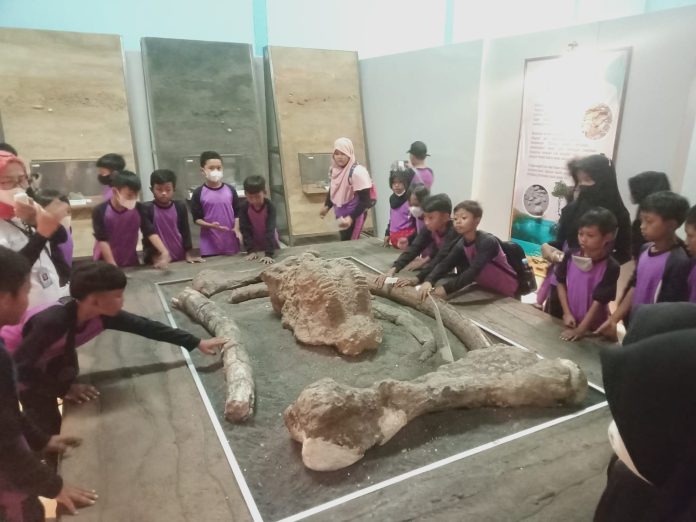There are three kinds of elephants that live in Sangiran: Mastodon, Stegodon, and Elephas. They lived in Sangiran for around 1 million years until about 20,000 years ago. The difference between their physical characteristics is the type of teeth and the shape of the tusk.
Among the 3 of them, Stegodon is the prima donna because there are many findings in very good condition, and anatomically, the findings are relatively complete.
Mastodon is the most primitive elephant in Sangiran. They have four ivories: two are large in the upper jaw, and the other two are small in the lower jaw. The type of mollar is bunodont.
The type of Stegodon most often found in Sangiran is Stegodon trigonocephalus. Stegodon has a prominent triangular skull roof. The body is bigger than an elephant’s nowadays, and elephants have tusks that are round and slightly curved. The type of teeth in Stegodon is brachyodont, which is based on what they eat, and they eat smooth leaves.
Elephas is the most modern and the third generation of early elephants. The fossils are mostly found in the Kabuh Formation. Elephas is similar to today’s elephant. The tusks are straight and are used to uproot trees, whose roots and brances become food. The type of tooth is hypsodont, which is used for chewing hard food such as dry grass and seeds. In order to introduce and get closer to the early elephant, BPSMP Sangiran provides a special display named “Touch Me.” The visitor can touch the fossil in order to feel the sensation of meeting elephants and also feel their golden era around 700–500 thousand years ago.
The display is in the Sangiran Early Man Museum Krikilan cluster, and the visitor can interact and get new experiences. The display collection is the only one that is allowed to be touched by the visitor. The aim of this display collection is to give visitors a sensation. (Wiwit Hermanto)
Translate by: Mutiara Solikhah





